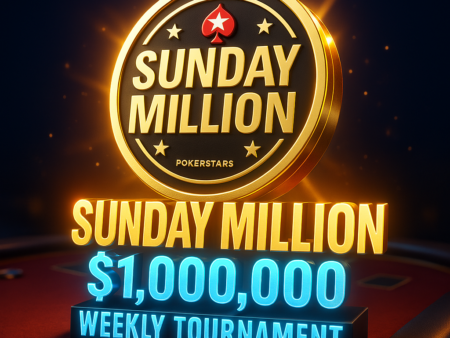🃏 Top 10 Texas Hold’em Mistakes to Avoid in 2025 – Improve Your Poker Game
Whether you’re grinding online poker cash games or playing live at your local card room, Texas Hold’em in 2025 remains as competitive as ever. And while many players focus on flashy plays and advanced strategies, the truth is that avoiding the most common poker mistakes can have a much bigger impact on your win rate.
In this updated guide, we’ll walk through the top 10 mistakes Texas Hold’em players make — and exactly how to avoid them. These are the pitfalls that separate losing players from long-term winners, and mastering them is essential for anyone looking to improve their poker game.
🎯 Why Avoiding Mistakes Is the Key to Winning at Texas Hold’em
Poker is not just a game of skill — it’s a game of discipline. Making fewer mistakes than your opponents is often the difference between a break-even player and a profitable one. Whether it’s poor bet sizing, tilt, or misunderstanding pot odds in Texas Hold’em, most costly errors can be avoided with the right mindset and preparation.
🔟 The Most Common Texas Hold’em Mistakes in 2025 (And How to Fix Them)
1. Playing Too Many Hands
Many beginners think that seeing more flops gives them more chances to win. In reality, playing too many hands in Texas Hold’em leads to marginal spots, bad beats, and long-term chip loss. Loose play might feel exciting, but it’s rarely profitable.
💡 Fix it: Learn starting hand ranges and stick to tight, aggressive play, especially from early position.
2. Ignoring Position at the Table
The importance of position in Texas Hold’em cannot be overstated. Acting last in a hand gives you the advantage of seeing what your opponents do before you act. Playing out of position puts you at a strategic disadvantage.
💡 Fix it: Favor playing more hands on the button and cutoff, and tighten up in early positions.
3. Overvaluing Top Pair
Overplaying top pair is one of the classic poker beginner mistakes. Just because you hit top pair doesn’t mean you’re ahead — especially on dynamic boards or against aggressive opponents.
💡 Fix it: Pay attention to board texture, opponent actions, and your kicker. Learn when to fold good-looking hands.
4. Slow-Playing Big Hands
While trapping has its place, slow playing in poker is often overused. Giving free cards to drawing hands just invites trouble.
💡 Fix it: Be aggressive with strong hands — especially on draw-heavy boards. Build the pot while protecting your equity.
5. Playing on Tilt
Tilt in poker — emotional play driven by frustration — can wipe out an entire session. Losing a big hand isn’t the end of the world, but going on tilt can make it feel like it is.
💡 Fix it: Recognize the signs of tilt. Take breaks, refocus, and return with a clear head.
6. Bluffing Too Much or Not Enough
One of the most misunderstood concepts is bluffing. Many players either never bluff or bluff too much without considering the situation. These poker bluffing mistakes are easy to exploit.
💡 Fix it: Bluff with intention. Consider blockers, board texture, and opponent ranges. Don’t bluff just because you missed the flop.
7. Misusing Pot Odds and Implied Odds
Chasing every flush or straight draw can cripple your bankroll if the math doesn’t justify it. Not understanding pot odds in Texas Hold’em is a technical leak that costs real money.
💡 Fix it: Learn how to calculate both pot odds and implied odds. Don’t make calls that aren’t profitable in the long run.
8. Poor Bet Sizing Strategy
Your bet sizes send a message. Using incorrect sizing — whether too small or too large — creates confusion and weakens your strategy. This is where bet sizing strategy in Texas Hold’em becomes crucial.
💡 Fix it: Adjust your bet sizing to reflect your goals: building the pot, applying pressure, or controlling the pot size. Use bet sizing as a weapon.
9. Playing Above Your Bankroll
Taking shots at higher stakes can be tempting, but poker bankroll management mistakes often end in disaster. Bankroll swings are part of the game — the question is whether you’re prepared for them.
💡 Fix it: Stick to proper bankroll rules. For cash games, keep at least 20–30 buy-ins. For MTTs, maintain 50+ buy-ins to absorb variance.
10. Not Studying or Reviewing Hands
No matter your skill level, if you’re not reflecting on your decisions and studying the game, you’re not growing. Many players stall simply because they stop learning. Solid poker study habits are what separate casual players from consistent crushers.
💡 Fix it: Review your sessions, analyze key hands, and use tools like PokerTracker or GTO Wizard. Study at least weekly to stay sharp in 2025’s evolving meta.
💼 Bonus Mistakes That Cost You Chips
- Misreading the board
- Playing distracted (phone, TV, multitasking)
- Multi-tabling too many tables without experience
- Failing to observe player tendencies
- Always assuming your opponent is bluffing
📌 Final Tips for Texas Hold’em Players in 2025
✅ Use tracking tools or HUDs (where allowed)
✅ Keep notes on regular opponents
✅ Join poker forums or coaching communities
✅ Mix up your play to stay unpredictable
✅ Always reflect after your session — what worked, what didn’t, and why
Great poker isn’t about never losing — it’s about consistently making fewer mistakes than the rest of the table.
🧠 Want to Master Texas Hold’em Strategy?
Ready to improve your game further? Don’t miss these in-depth guides:
- 🎯 [Poker Strategy 101 – Master the Basics]
- 🃏 [How to Play Texas Hold’em – Full Rules & Winning Tips]










